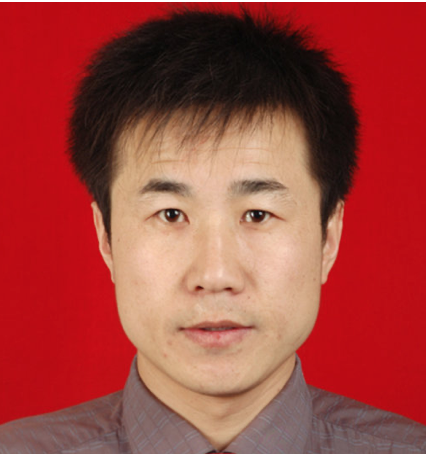應yl7703永利官網(wǎng)李朋副教授邀請,西南大學數(shù)學與統(tǒng)計學
 院王建軍教授,將于2022年4月14日(周四)上午9:00在線舉辦專題報告.
院王建軍教授,將于2022年4月14日(周四)上午9:00在線舉辦專題報告.
報告題目:Low Tubal Rank Tensor Sensing and Robust PCA from Quantized Measurements
報告時間:2021年4月14日(星期四)上午9:00
騰訊會議ID:488-124-877
報告摘要:Low-rank tensor Sensing (LRTS) is a natural extension of low-rank matrix Sensing (LRMS) to high-dimensional arrays, which aims to reconstruct an underlying tensor X from incomplete linear measurements M(X). However, LRTS ignores the error caused by quantization, limiting its application when the quantization is low-level. In this work, we take into account the impact of extreme quantization and suppose the quantizer degrades into a comparator that only acquires the signs of M(X). We still hope to recover X from these binary measurements. Under the tensor Singular Value Decomposition (t-SVD) framework, two recovery methods are proposed---the first is a tensor hard singular tube thresholding method; the second is a constrained tensor nuclear norm minimization method. These methods can recover a real n1*n2*n3tensor X with tubal rank r from m random Gaussian binary measurements with errors decaying at a polynomial speed of the oversampling factor lambda:=m/((n_1+n_2)n_3r). To improve the convergence rate, we develop a new quantization scheme under which the convergence rate can be accelerated to an exponential function of lambda. Numerical experiments verify our results, and the applications to real-world data demonstrate the promising performance of the proposed methods.
Quantized Tensor Robust Principal Component Analysis (Q-TRPCA) aims to recover a low-rank tensor and a sparse tensor from noisy, quantized, and sparsely corrupted measurements. A nonconvex constrained maximum likelihood (ML) estimation method is proposed for Q-TRPCA. We provide an upper bound on the Frobenius norm of tensor estimation error under this method. Making use of tools in information theory, we derive a theoretical lower bound on the best achievable estimation error from unquantizedmeasurements. Compared with the lower bound, the upper bound on the estimation error is nearly order-optimal. We further develop an efficient convex ML estimation scheme for Q-TRPCA based on the tensor nuclear norm (TNN) constraint. This method is more robust to sparse noises than the latter nonconvex ML estimation approach. Conducting experiments on both synthetic data and real-world data, we show the effectiveness of the proposed methods.
報告人簡介
王建軍,博士,西南大學三級教授,博士生導師,重慶市學術帶頭人,重慶市創(chuàng)新創(chuàng)業(yè)領軍人才,巴渝學者特聘教授,重慶工業(yè)與應用數(shù)學學會副理事長,重慶市運籌學會副理事長, CSIAM全國大數(shù)據(jù)與人工智能專家委員會委員,美國數(shù)學評論評論員,曾獲重慶市自然科學獎勵. 主要研究方向為:高維數(shù)據(jù)建模����、機器學習(深度學習)�、數(shù)據(jù)挖掘��、壓縮感知�����、張量分析�、函數(shù)逼近論等. 在神經(jīng)網(wǎng)絡(深度學習)逼近復雜性和高維數(shù)據(jù)稀疏建模等方面有一定的學術積累. 主持國家自然科學基金5項,教育部科學技術重點項目1項,重慶市自然科學基金1項,主研8項國家自然、社會科學基金�;現(xiàn)主持國家自然科學基金面上項目2項,參與國家重點基礎研究發(fā)展‘973’計劃一項, 多次出席國際�、國內(nèi)重要學術會議,并應邀做大會特邀報告22余次. 他已在IEEE PAMI(2),IEEE TNNLS(2),Appl. Comput. Harmonic Anal.(2), Inverse Problems, Neural Networks, Signal Process(2),IEEE Signal Process Letter(2),J. Comput. Appl. Math.,ICASSP,IET Image Process.(2), IET Signal Process.(4),中國科學(A,F輯)(4), 數(shù)學學報, 計算機學報, 電子學報(3)等知名專業(yè)期刊發(fā)表90余篇學術論文. 王建軍教授擔任IEEE等系列物National Science Review., Signal Process., Neural Network. Pattern. Recognition., 中國科學����,計算機學報,電子學報���,數(shù)學學報等知名刊物的審稿人.
甘肅應用數(shù)學中心
甘肅省高校應用數(shù)學與復雜系統(tǒng)省級重點實驗室
yl7703永利官網(wǎng)
萃英學院
2022年4月12日
